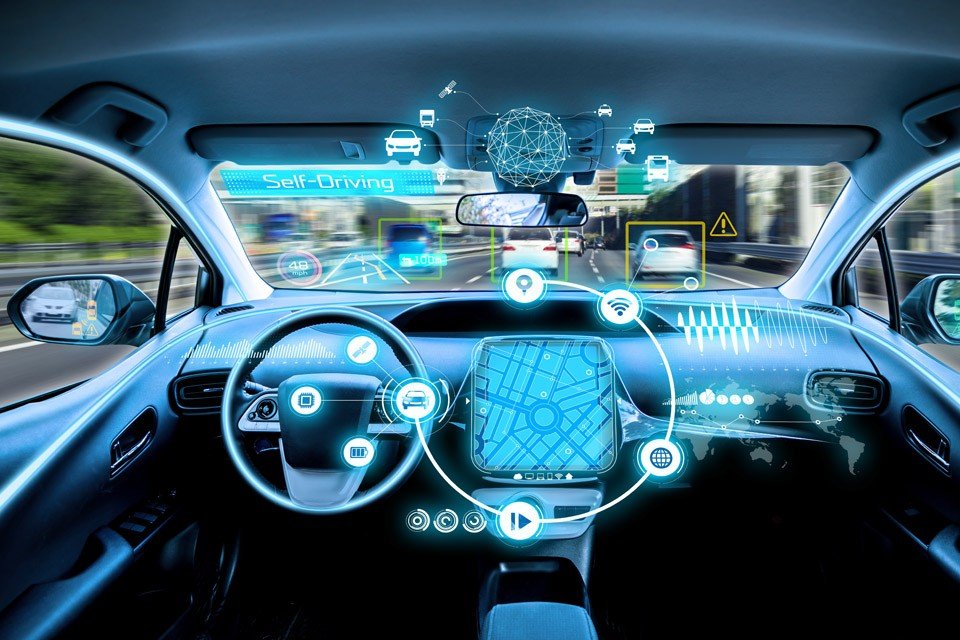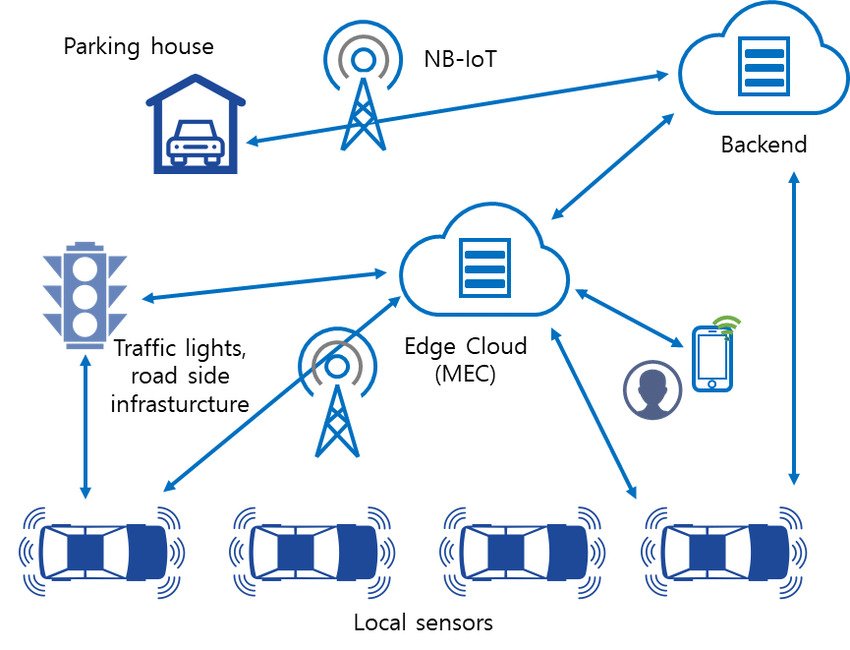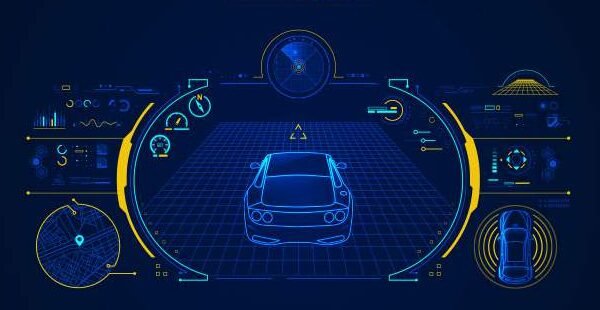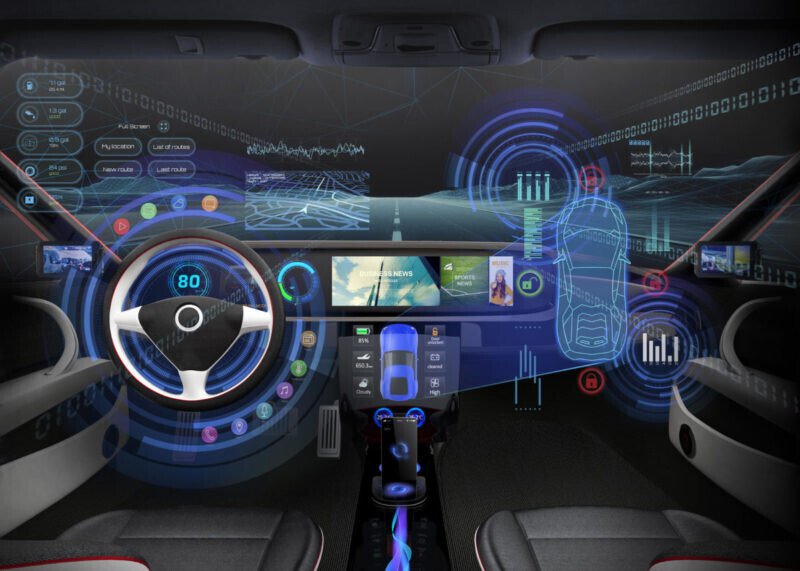Edge Coumputing with Autonomous Vehicles

The Role of Edge Computing in the Autonomous Vehicle Industry
Edge computing is revolutionizing the autonomous vehicle industry by enabling real-time data processing at or near the source of data generation. Unlike traditional cloud computing, where data is sent to distant data centers for processing, edge computing ensures that critical computations occur locally—either within the vehicle itself or in nearby infrastructure. This shift is essential for overcoming key challenges in autonomous driving, such as latency, data bandwidth constraints, and real-time decision-making.
Autonomous vehicles rely on vast amounts of sensor data from LiDAR, cameras, radar, and GPS to navigate safely. Processing this data in real-time is crucial for split-second decision-making, obstacle detection, and collision avoidance. However, sending all this data to the cloud for processing introduces delays that can be life-threatening in high-speed or complex driving scenarios. Edge computing addresses these challenges by bringing computation closer to the source, enabling faster responses and improved reliability.
How Edge Computing Works in Autonomous Vehicles
Edge vs. Cloud Computing
Edge computing differs from cloud computing in that data is processed locally on edge devices (e.g., within the vehicle or on roadside infrastructure) rather than being transmitted to remote cloud servers. This decentralization reduces dependency on internet connectivity and enhances real-time processing capabilities.
Onboard Edge Processing
Autonomous vehicles are equipped with specialized computing units, such as NVIDIA’s DRIVE platform, which function as edge computing nodes. These systems process sensor data in milliseconds, enabling immediate responses to traffic conditions, pedestrian movements, and road hazards without needing constant cloud communication.
Infrastructure-Based Edge Nodes
In addition to onboard processing, edge computing extends to smart infrastructure, such as traffic lights and roadside units (RSUs), which assist in vehicle-to-everything (V2X) communication. These nodes process data locally and share relevant insights with nearby vehicles, enhancing overall traffic management and safety.

Key Use Cases of Edge Computing in Autonomous Vehicles
Implementing Multi-Access Edge Computing (MEC) using 5G technology requires careful planning and execution. The following guide outlines the necessary steps to successfully deploy MEC in a 5G environment.
Autonomous vehicles must interpret sensor data instantaneously to detect obstacles, recognize traffic signals, and respond to unpredictable road conditions. Edge computing enables immediate data analysis, allowing vehicles to react within microseconds, reducing accidents and improving road safety.
Latency is a critical factor in autonomous driving. A delay of even a few milliseconds in data transmission can be the difference between preventing or causing an accident. Edge computing minimizes latency by processing data locally rather than relying on cloud servers, ensuring faster response times for critical functions like emergency braking and lane changes.
By keeping sensitive data localized, edge computing reduces exposure to cyber threats and ensures compliance with data privacy regulations. Autonomous vehicles collect personal and behavioral data, and processing it at the edge minimizes the risk of unauthorized access or data breaches.
V2X communication allows autonomous vehicles to interact with other vehicles, traffic signals, and road infrastructure to enhance situational awareness. Edge computing enables efficient V2X data exchange by processing and disseminating relevant information in real time, improving traffic flow and reducing congestion.
Edge computing facilitates seamless and secure OTA updates for autonomous vehicles, ensuring they remain up-to-date with the latest software patches and AI model improvements. This reduces the need for physical service visits and enhances the overall reliability of self-driving systems.

Benefits of Edge Computing for Autonomous Vehicles
- Improved Safety and Reliability: Faster data processing enhances real-time decision-making, reducing accident risks.
- Enhanced Scalability and Efficiency: Reduces cloud dependency and bandwidth requirements, making large-scale autonomous deployments feasible.
- Reduced Bandwidth and Cloud Costs: Processing data locally minimizes the need for high-bandwidth cloud transmission, cutting operational costs.
Examples of Edge Computing in Action
Tesla’s Full Self-Driving (FSD) System
Tesla leverages onboard AI chips for real-time edge computing, allowing vehicles to process sensor data locally without relying on cloud connectivity. This capability enhances decision-making and responsiveness on the road.
Waymo’s Edge AI Integration
Waymo, Alphabet’s autonomous vehicle subsidiary, employs edge AI to process LiDAR and camera data in real time, optimizing navigation and obstacle detection while reducing reliance on cloud processing.
NVIDIA DRIVE Platform
NVIDIA’s DRIVE platform provides a comprehensive edge computing solution for autonomous vehicles, integrating AI-based perception, path planning, and decision-making within the vehicle itself.
Challenges and Future Outlook
Future Outlook
5G Integration
Ultra-low latency 5G networks will further enhance edge computing capabilities, enabling near-instantaneous data exchange.
Smart City Synergy
Edge computing in autonomous vehicles will integrate with smart city initiatives, optimizing traffic flow, reducing emissions, and improving urban mobility.
AI-Powered Edge Nodes
Continued advancements in AI and machine learning will enhance edge computing’s ability to predict and respond to complex driving scenarios.à

Challenges
Infrastructure Development
Widespread adoption of edge computing requires significant investment in smart infrastructure, such as roadside edge nodes and V2X networks.
Standardization Issues
The lack of standardized protocols for edge computing in autonomous vehicles hinders seamless integration across different manufacturers and platforms.
High Costs
Advanced edge computing hardware and AI-driven processors can be expensive, limiting adoption in budget-conscious markets.
Conclusion
Edge computing is a game-changer for autonomous vehicles, addressing critical challenges related to latency, real-time processing, and security. By enabling faster decision-making, reducing cloud dependency, and enhancing V2X communication, edge computing paves the way for a safer and more efficient future of autonomous transportation. As technology continues to evolve, the integration of edge computing with 5G and AI will further revolutionize self-driving cars, making them more intelligent, responsive, and interconnected within the broader smart city ecosystem.






